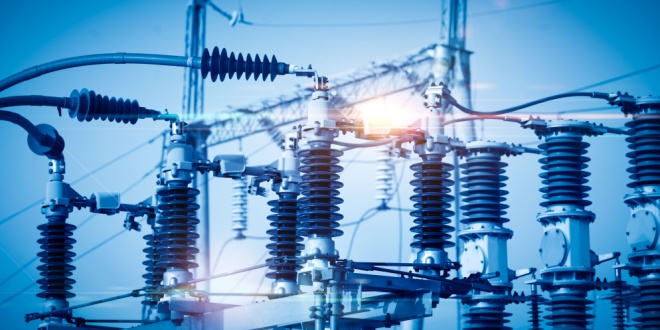Early next year, construction is expected to begin on 9.3 miles of high-voltage transmission lines that will traverse Riverside, Jurupa Valley and a portion of Norco.
Nearly twenty years in the marking, the $720 million Riverside Transmission Reliability Project will give the city – which operates its own public utility – a much-needed second connection to California’s statewide power grid, according to city officials.
The reliability project, which is expected to take four years to complete, will finally happen after several years of debate between the three cities and the California Public Utilities Commission. The dispute was about whether the power lines should be underground or attached to a series of transmission towers that could reach nearly 200 feet tall.
Despite concerns about possible fire hazards, the commission in March voted 3-0 (two commissioners were absent) to allow the power project to be built above ground.
“A lot of people have raised concerns about transmission lines causing wildfires, and we take those concerns seriously,” Commissioner Karen Douglas said. “But these issues have been addressed by Riverside, and it found that the transmission towers are a less-than-significant threat to start a wildfire.
“The towers are designed to withstand strong winds, they’re spaced safely, and the electricity flow can be cut off in an instant if there’s any emergency.”
Two months later, the Riverside City Council agreed to proceed with the reliability project. It voted 4-3 in favor of putting up the transmission towers, which will be built and operated by Southern California Edison.
Ideally, the reliability project would be underground, but that’s not going to happen, Councilman Sean H. Mill said.
“My position has always been the same: I want this project underground,” said Mill, who cast one of the four yes votes. “But I also want to see this project done. It’s time to rip the band aid off and move forward.
“Are we going to let this go another five or 10 years?”
Riverside is the only city of its size in Southern California that does not have a connection to the state power grid system, according to a fact-sheet on the city’s website.
“It will be a backup system if we lose our one source of power,” said Daniel Honeyfield, Riverside’s assistant general manager for energy delivery. “It will also help create capacity for future growth. It’s a very important project for Riverside, for a lot of reasons.”
Barring any last-minute changes, the reliability project will allow Riverside to deliver up to 1,200 megawatts of electricity to its commercial and residential customers, more than enough to provide the city [pop. 320,764] for at least 50 years.
To put that number in context, Riverside’s public utility peaked at 650 megawatts during a summer heatwave in 2022.
Just as important, the second power grid connection will allow Riverside to better respond to a natural disaster or other emergency by making certain that its hospitals, trauma centers, jails, fire stations, traffic signals, etc., will continue to function.
“The need for this project was demonstrated clearly in 2007, when transmission lines that feed Riverside were damaged and power was out across the city for over four hours,” the fact-sheet reads. “This cannot be allowed to happen again.”
Riverside will proceed with the reliability project, its share of which will be about $200 million. That share will be paid for with revenue generated by a special fee that has been attached to Riverside utility bills for several years, Honeyfield said.
Riverside has also agreed to build a substation, and Southern California Edison will build a switchyard, on a 15-acre site near Van Buren Boulevard and Jurupa Avenue. Construction is expected to start on both when the reliability project is near completion.
Riverside will move forward with the project despite opposition from Norco.
Since 2017, the city that calls itself Horsetown USA has opposed the above-ground transmission lines, claiming they would disrupt River Trails Park along the Santa Ana River, as well as some neighborhoods next to Norco.
“The approved above-ground transmission lines present significant hazards, specifically wildfire hazards, to Norco and surrounding communities,” said Kelli Newton, Norco’s communications manager, in an e-mail interview. “Norco faces a very high risk of catastrophic wildfires within its city limits, which has increased in recent years.”
Whether to put the power lines above or below ground has dogged the reliability project since it was first proposed. In addition to safety issues, some people were concerned about what a series of unsightly transmission towers might do to property values.
In 2013, Riverside approved an environmental impact report that called for the entire project to be above ground. Six years later the city approved a second environmental report that called for some of the project in Jurupa Valley to be underground, and the rest to remain above ground.
That’s where the project remains today, but Norco has not given up the fight.
In a letter dated June 6, the Norco City Council asked the Riverside City Council to reconsider its decision to go along with construction of the transmission towers, declaring that underground power lines are “the right thing to do for a number of reasons.”
The letter, signed by all five Norco council members, then gives a point-by-point critique of constructing a trail of transmission towers across a stretch of Riverside County that covers three cities.
It claims that putting the power lines below ground might be cheaper than running them above ground, and that the utility commission’s decision against underground lines was “deeply flawed and factually inaccurate,” particularly in its conclusion that the towers won’t be a significant fire hazard.
“We encourage the (Riverside) city council to focus on the big picture of this fundamental and long-lasting decision,” the letter reads. “Instead of proceeding with the project in its current form, let us work together to expedite the underground option.”
Riverside has not responded to the letter, Newton said.
 IE Business Daily Business news for the Inland Empire.
IE Business Daily Business news for the Inland Empire.


